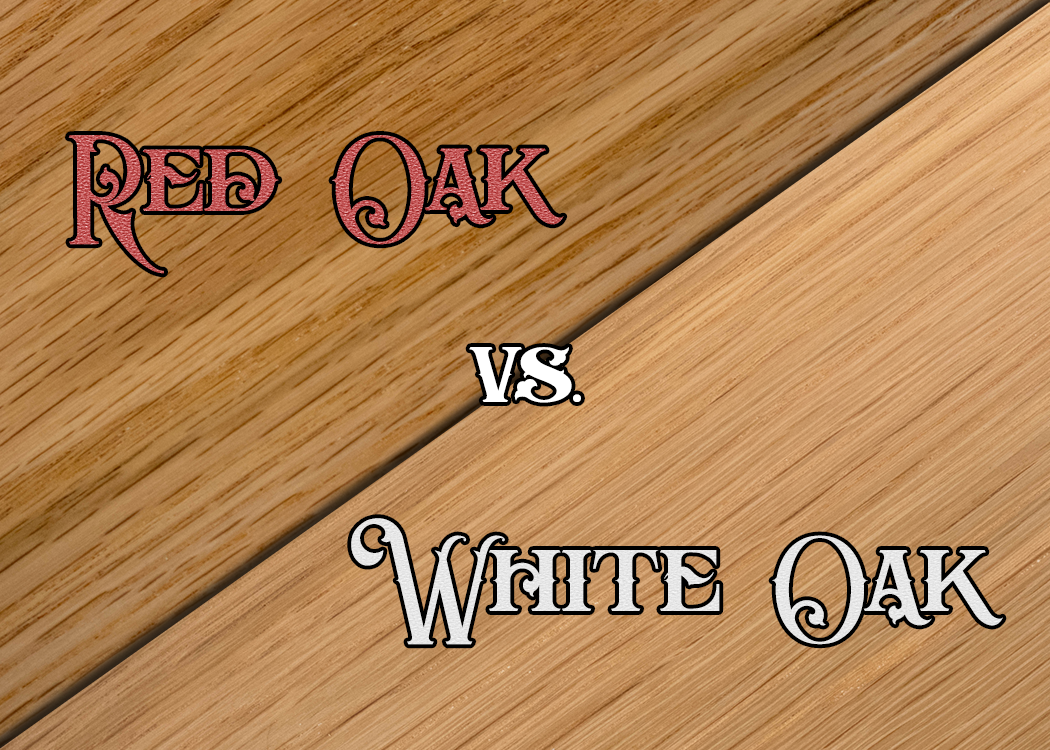Red Oak and White Oak are both beautiful hardwoods with both having their respective places for a large variety of uses and products. But how can you tell the difference? Which species would work best for you?
 If you are fortunate enough to know someone that is an expert on hardwoods then they would most likely tell you that there is quite a bit of difference between Red Oak and White Oak. To make it even more tricky, under each species of Red and White Oak there are as many as 8 or 9 different scientific species names that contribute to each category of Quercus rubra (Red Oak) and Quercus alba (White Oak).
If you are fortunate enough to know someone that is an expert on hardwoods then they would most likely tell you that there is quite a bit of difference between Red Oak and White Oak. To make it even more tricky, under each species of Red and White Oak there are as many as 8 or 9 different scientific species names that contribute to each category of Quercus rubra (Red Oak) and Quercus alba (White Oak).
For many, the choice between Red Oak and White Oak simply comes down to their preference based on the product they are producing. Whether it be furniture, flooring, cabinetry, doors, windows, etc. each have their own traits that are desirable for each application, beyond color. So it is important to note that there is a great deal difference between both species.
Color. Right off the bat, the most superficial differences between these species are the color of the wood. Typically, Red Oak has a characteristic pinkish hue. While White Oak has a golden, creamy tone. Depending on the look you are going for, color can be an important consideration for many people.
Hardness. White Oak is also slightly harder than Red Oak. White Oak has Janka hardness of 1360 while Red Oak follows slightly behind with a Janka hardness of 1290. Both of these species handle wear especially well and can excel in a multitude of applications. For this reason, Red Oak is primarily used for indoor applications, while White Oak is commonly used for both indoor and outdoor uses.
Structure. One of the most significant differences between the two species is their cell structure. This is noticeable by looking at the end grain of both of these species. In White Oak, the pores in the fiber are found to be filled with tyloses. Due to the tyloses present in White Oak, it is able to be utilized for water-bearing products such as wine and whiskey barrels. The same cannot be said for Red Oak. This also is why many exterior applications use White Oak. The closed pore cell structure makes it much more resistant to rot and decay.
Rays. Another point of differentiation between the two is their rays. Medullary Rays, or more commonly referred to as rays, are important capillaries that transport water and nutrients throughout the tree as it grows. These rays grow from the center of the log out across the growth rings. As the tree is harvested and sawed into lumber they present themselves as unique characteristics of the boards. These characteristics are especially prevalent when the logs are quartersawn. When sawn this way the boards are cut with the growth rings perpendicularly to the face of the board. Quartersawn Oak offers a unique and beautiful visual appeal that makes it highly desirable for designers. You will typically find this sawing style in White Oak since the rays are much more pronounced in comparison to Red Oak, making Quartersawn White Oak perfect for someone who likes unique details in their work.
With all this in mind, the most important thing to keep in mind is what oak lumber will work best for your application? If you have any questions or need any help figuring out whether Red Oak or White Oak is the right fit for your production, let us know. We'll do our best to help!
Tony C.
The Baillie Group

